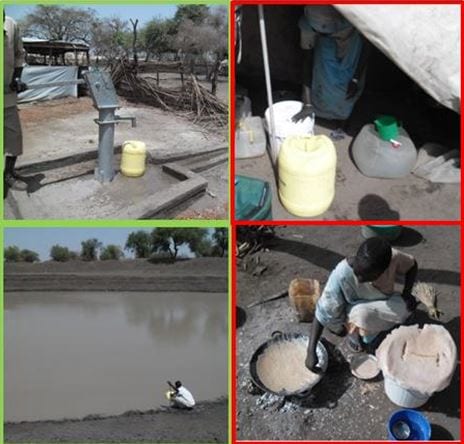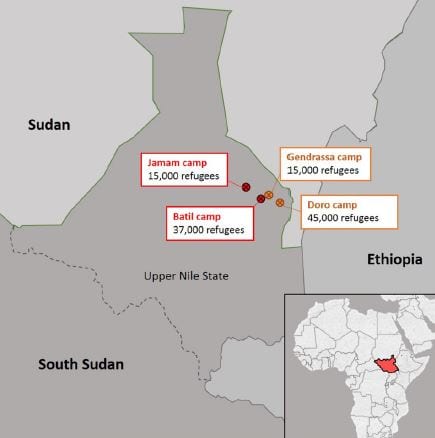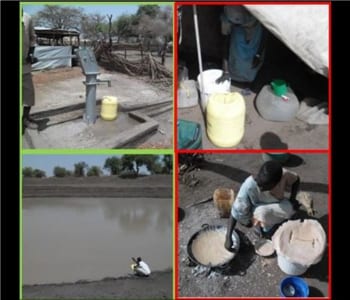 Outbreaks of hepatitis E virus (HEV) are usually associated with contaminated drinking water. To identify virus transmission routes, researchers from Spain analyzed water matrices and food during a recent HEV outbreak (2012–2014) in a refugee camp in South Sudan. The viral indicator human adenovirus (HAdV) was detected in household samples but not in samples from water sources. This result suggests that there is a high risk of virus transmission at household level.
Outbreaks of hepatitis E virus (HEV) are usually associated with contaminated drinking water. To identify virus transmission routes, researchers from Spain analyzed water matrices and food during a recent HEV outbreak (2012–2014) in a refugee camp in South Sudan. The viral indicator human adenovirus (HAdV) was detected in household samples but not in samples from water sources. This result suggests that there is a high risk of virus transmission at household level.
The long incubation period (4–10 weeks) of HEV impedes the determination of infection sources. Therefore, there is a need for alternative ways to identify transmission routes and risk factors. As water with fecal contamination was associated with outbreaks, it is suitable for monitoring virus concentrations. HEV concentrations during the study were low because samples were taken during the last phase of the outbreak.  However, HAdV was used to determine if contact of water with human fecal materials had occurred, which would imply a risk of waterborne virus transmission. HAdV shows high stability and can be quantified by quantitative polymerase chain reaction. Therefore, it is a reliable molecular index for human virus contamination.
However, HAdV was used to determine if contact of water with human fecal materials had occurred, which would imply a risk of waterborne virus transmission. HAdV shows high stability and can be quantified by quantitative polymerase chain reaction. Therefore, it is a reliable molecular index for human virus contamination.
Controlling the microbiological quality of drinking water, improving hygiene practices and sanitation, and identifying fecal water contamination would be required to prevent future HEV outbreaks. The authors advise that at high risk situations such as heavy rain or flooding, monitoring viral contaminants in water is an essential prevention measure.














